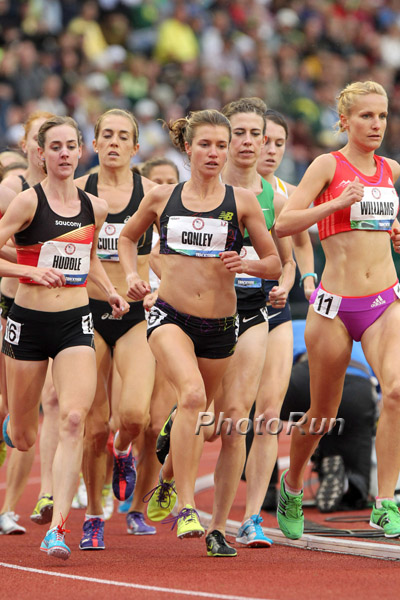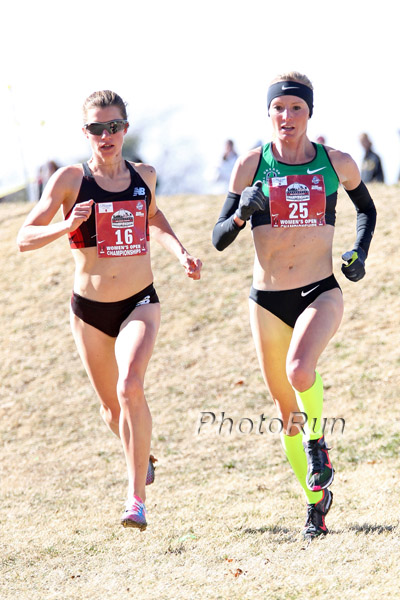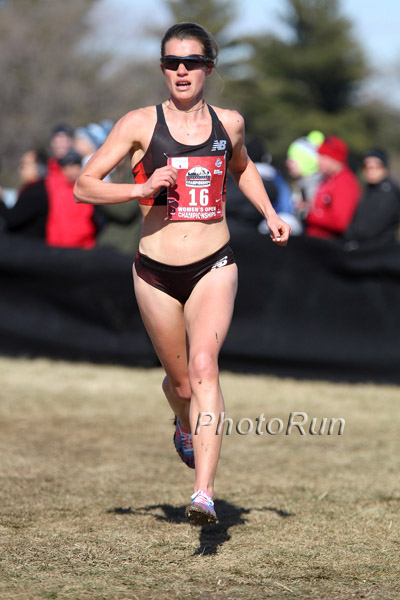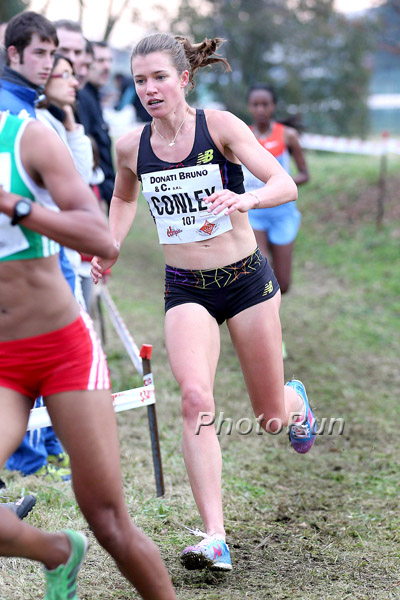RelatedPosts
Crushing a fantastic last lap, Kim Conley ran 15:22.07, to win the Payton Jordan Invitational from Katie Mackay and Julia Lucas in a hotly contested twelve and one half laps on Sunday, April 28, 2013. Kim Conley’s swift run gives her the the 7th fastest time in the World in 2013.
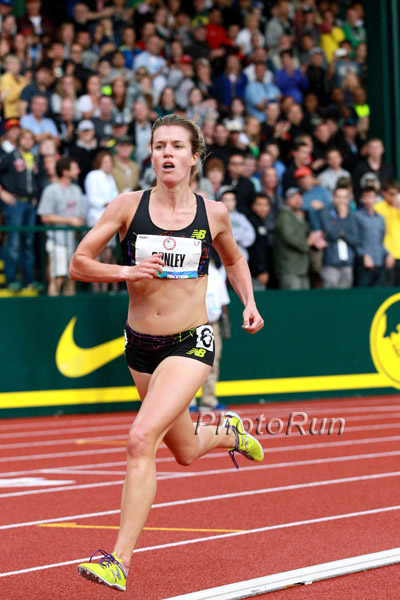
Kim Conley, 2012 Olympic Trials,
photo by PhotoRun.net
RBR, # 1. How did you get started in the sport?
Kim Conley: I joined a track team in the 6th grade. As a kid, I liked to play a different sport each season. In the fall it was soccer, in the winter basketball, and in the spring softball. Eventually I decided that softball was too boring because I didn’t get to run around enough. A friend had joined a local club track team and so the following year I decided to give up softball as my spring sport and give track a try. I continued into junior high, and by high school I ended up giving up the other sports to focus on cross country and track.
RBR, # 2. What was your high school experience in sports like?
Kim Conley: High school was where I truly fell in love with running. My freshman year I was fortunate enough to be a part of a team that won the state championships in cross country, which was a great introduction to the team aspect of cross country. We were also lucky in that we had a beautiful state park (Annadel State Park in Santa Rosa, CA) where we did the majority of our training. I’ve always been a natural competitor, but it was in that park with my teammates that I learned to love simply running (although I would still try to race them up the hills!).
RBR, # 3. What were your best marks in high school?
Kim Conley: 800m-2:16, 1,600m-4:52, 3,200m-10:58, 5k xc at Woodward Park in Fresno, CA-17:53.
RBR, # 4. If you could do anything over in college experience, what would that be?
Kim Conley: I would take my training more seriously from the beginning. In high school, I learned to love the sport and had fun running around the park with my friends, but I didn’t learn to view each day as an important element of training with a specific purpose. On account of that fact, in college I spent my first few years just going through the motions of a lot of the elements of our training program and taking a lot of runs very easy. It wasn’t until my 4th year that I really became focused every day and determined to see how fast I could be. I started running more miles, and I ran them a lot faster than I had before. I also started working with a nutritionist and a sport psychologist, both of which helped me to become a more complete athlete. I think I could have performed much better at the collegiate level if my attitude towards training had been that dialed in from my freshman year.
RBR, # 5. What were differences between high school and college track for you?
Kim Conley: The importance of training in college in much greater than in high school. In high school, we raced twice a week for the majority of the season, which meant we spent a lot of the early season “racing into shape”. In a college cross country season, you race 5-6 times total. Initially my attitude in college was “I really have to make each race count”, which is true, but what it took me a while to learn was that you also ha
ve to make a lot of the workouts really count because you’re not merely using races to build fitness anymore.
RBR, # 6. What were your biggest experiences in college track?
Kim Conley: My biggest experience in college was racing at the 2008 NCAA cross country championships. It was by far the greatest field I had ever competed in and gave me a great appreciation for the depth of talent in the NCAA system.
Kim Conley, Shalane Flanagan, 2013 USA XC,
photo by PhotoRun.net
RBR, # 7. How did you go pro?
Kim Conley: After graduating from UC Davis in 2009, I decided that I wanted to continue to pursue running, at the very least through the Olympic Trials in 2012. I hadn’t run nearly fast enough to go pro straight out of college (my 5k best was 16:17), but I made steady progress in the three years out of college leading up to the Olympic Trials. In 2010 I lowered my 5k best to 15:51, in 2011 dropped it down to 15:38, and then at Mt. SAC in 2012 I opened my season with another PR, bringing it down to 15:24. That is when my relationship began with New Balance and I signed with them later that spring.
RRB, # 8. What is biggest differences between pro and elite amateur?
Kim Conley: The biggest difference between a pro an elite amateur is the lifestyle that a professional runner can afford to live. We all have to have some way to support ourselves, and for an elite amateur that means finding a job that will pay the bills but also allow them time to train and travel to competition. Before I was earning a living solely through running, I followed closely the lifestyles of professional athletes I looked up and tried to mimic how they lived as closely as my schedule would permit. I was fortunate enough to be in a situation where I could go to altitude camps for a month and go home for naps during the day, but eventually I decided if I was ever going to truly “make it” I had to stop working and become a full time athlete.
Kim Conley, 2013 USAXC,
photo by PhotoRun.net
RBR, # 9. What are your goals for 2013?
Kim Conley: I’m currently focused on the World Cross Country Championships, but after that I will return my attention to the track where my goal is to make the World Team for Moscow.
RBR, # 10. If you had a high school track team in front of you, what main point would you want to get across about our sport?
Kim Conley: To be successful you have to be very hardworking and disciplined, but that if you really love what you are doing and enjoy both training and competing then the proper work ethic should come naturally. At the high school level I think the most important thing is to form a foundation of love for the sport and as they progress from there they can continue to refine their approach to training and competing.
RBR, # 11. What do you train in, and what do you race in?
Kim Conley: I train in the New Balance 890’s and 870’s and race in the LD 5000 spikes, RC 5000 flats, and RC 1600 flats.
Kim Conley, 2012 Olympic Games,
RBR, # 12. What does a typical day of build up training look like?
Kim Conley: Aside from basic aerobic runs, a morning workout during the pre-competition phase is usually a fartlek ranging from 25-45 minutes, a tempo run of 4-10 miles, or tempo repeats, such as 10xmile with 1 min rest. A core and stability routine follows all workouts.
Evening runs of 20-30 minutes several times a week, and a general strength routine two afternoons a week.
Sunday is generally long run day. I will get out as long as two hours, and every few weeks the long run will have a progressive portion, where I squeeze the pace down toward the 5:30 range for the final few minutes.
RBR, # 13. What does a typical day of training look like during season?
Kim Conley: Shake out of run of 20-30 minutes opposite the primary run or workout of the day.
Workouts vary between the afternoon or evening (depending on the time of upcoming races). Track intervals could be anything from 2000m repeats down to “broken k’s” which are sets of 500-300-200m repeats, depending on the event I am preparing for (I race the 1500m to the 10,000m) and where we are in the season. Core and stability routine again follow virtually all workouts.
RBR, # 14. Your favorite track athlete, past or present?
Kim Conley: My favorite track athlete is Billy Mills. I’ve known his story for a long time, but in recent months have had the honor of meeting him and getting to know him a little bit. I will forever be impressed by what he accomplished in Tokyo, but now also admire him for the balance he strikes between humility and great presence.
RBR, # 15. If you were not doing your event, what other event in track and field would you do?
Kim Conley: I think I would want to run the 400m. While there is certainly strategy, once the gun goes off there is less tactical gamesmanship than longer races and yet there isn’t as much pressure to get a good start like there is in the 100m and 200m.
RBR, # 16. What is your favorite event to compete at?
Kim Conley: The 1500m is a great distance. It’s short enough to be spectator friendly, but long enough that you still need to be strong to race it successfully. It requires a great blend of speed and strength which makes it both fun to compete in and train for.
RBR, # 17. Do you have an inspirational quote?
Kim Conley: My coach made me a training log for Christmas this past year, and the on the first page there is a quote that says “The discipline of delivering excellence starts with making demands in training tougher than the demands in the arena” -Frank Dick. Seeing it daily when I log my workouts keeps me motivated to keep pushing, especially during the windows of training when there isn’t a race right around the corner.
Author

Larry Eder has had a 52-year involvement in the sport of athletics. Larry has experienced the sport as an athlete, coach, magazine publisher, and now, journalist and blogger. His first article, on Don Bowden, America's first sub-4 minute miler, was published in RW in 1983. Larry has published several magazines on athletics, from American Athletics to the U.S. version of Spikes magazine. He currently manages the content and marketing development of the RunningNetwork, The Shoe Addicts, and RunBlogRun. Of RunBlogRun, his daily pilgrimage with the sport, Larry says: "I have to admit, I love traveling to far away meets, writing about the sport I love, and the athletes I respect, for my readers at runblogrun.com, the most of anything I have ever done, except, maybe running itself." Also does some updates for BBC Sports at key events, which he truly enjoys. Theme song: Greg Allman, " I'm no Angel."
View all posts

